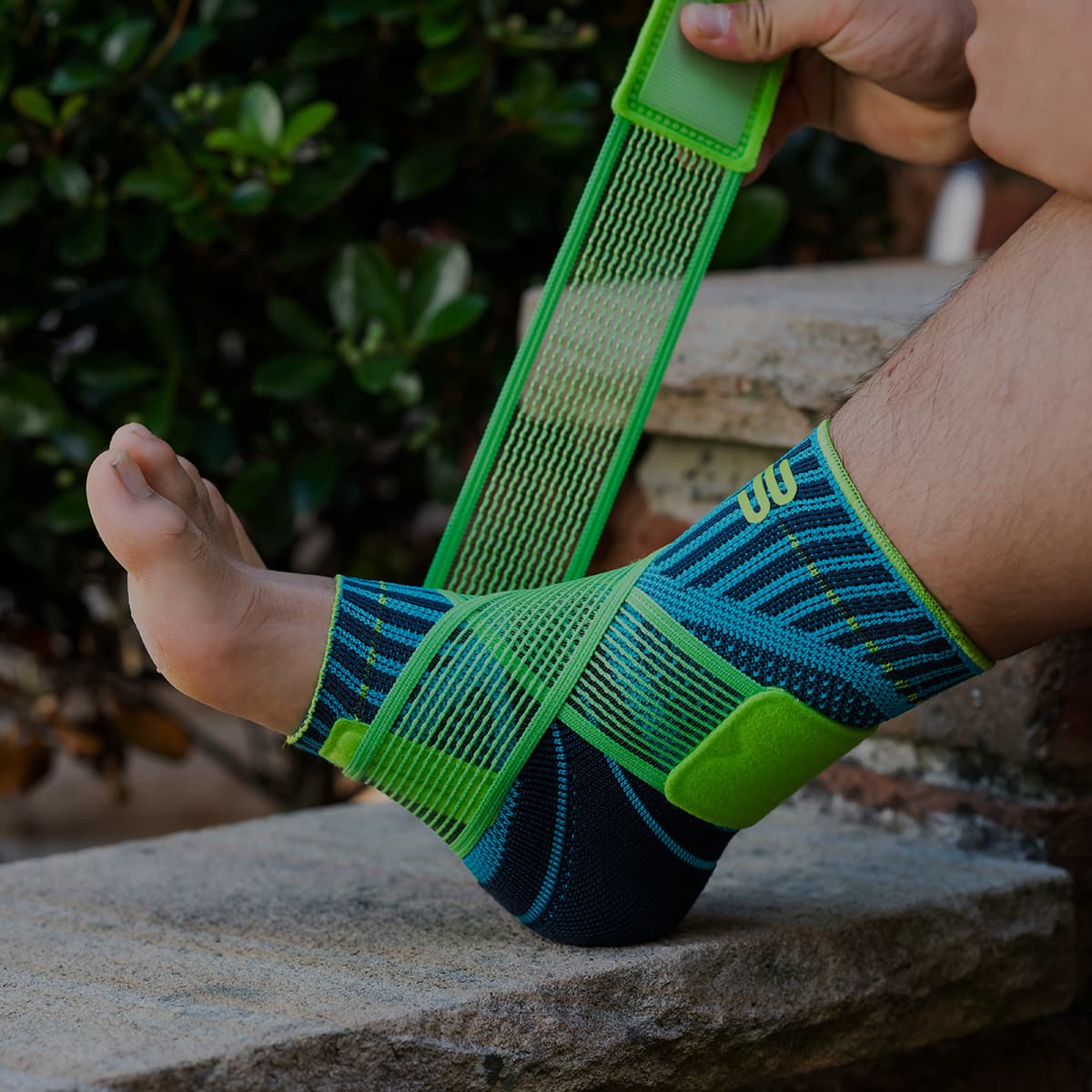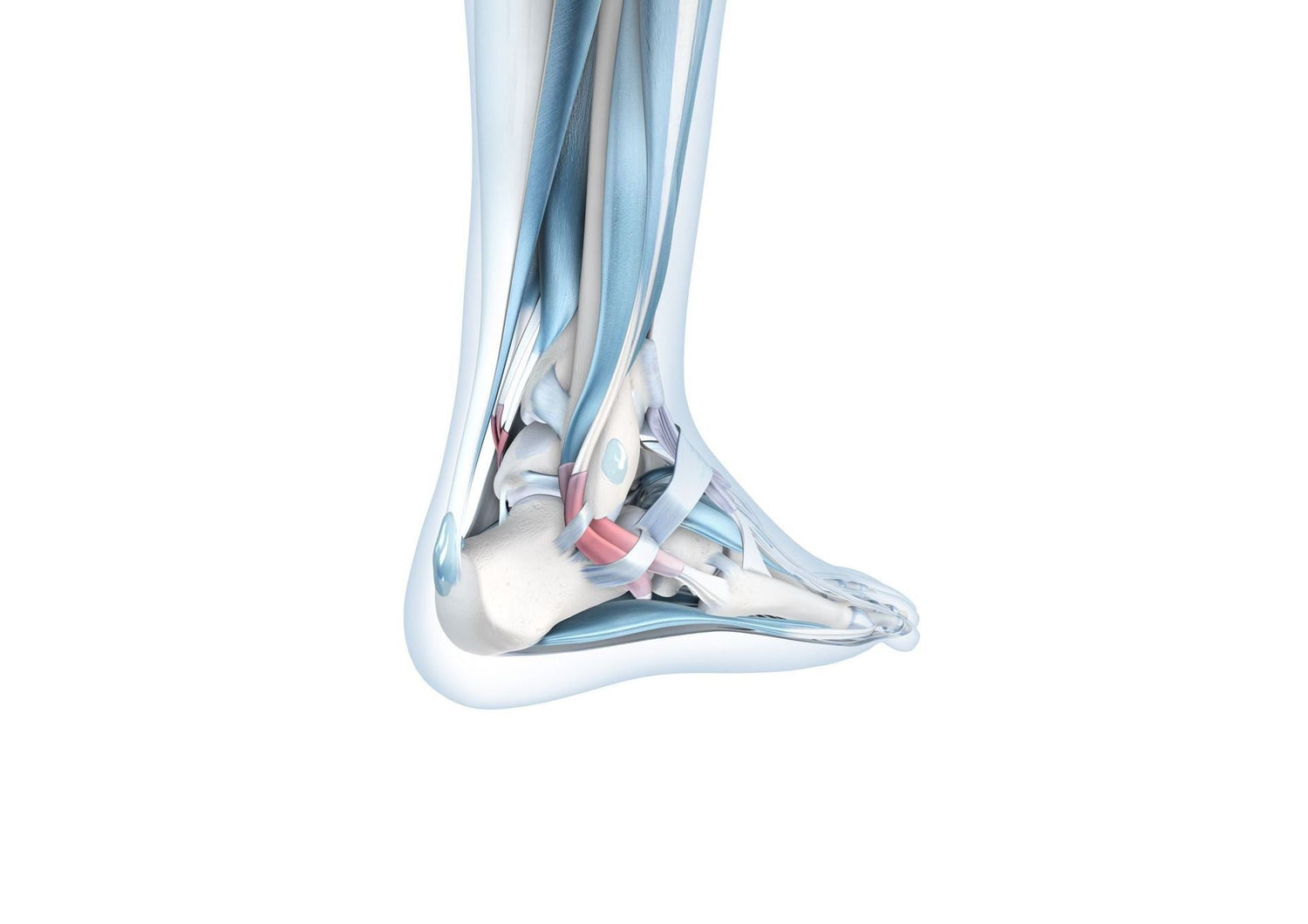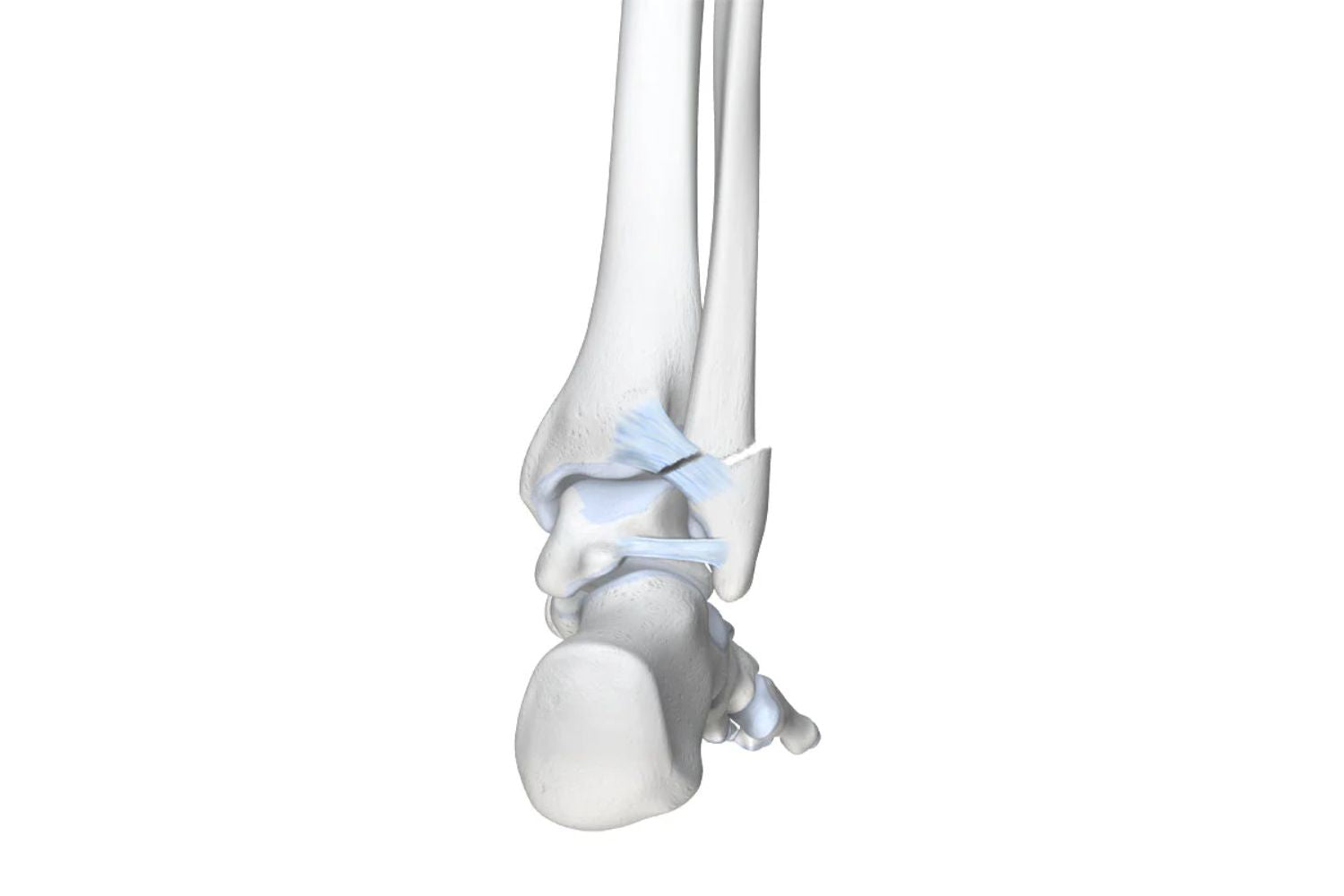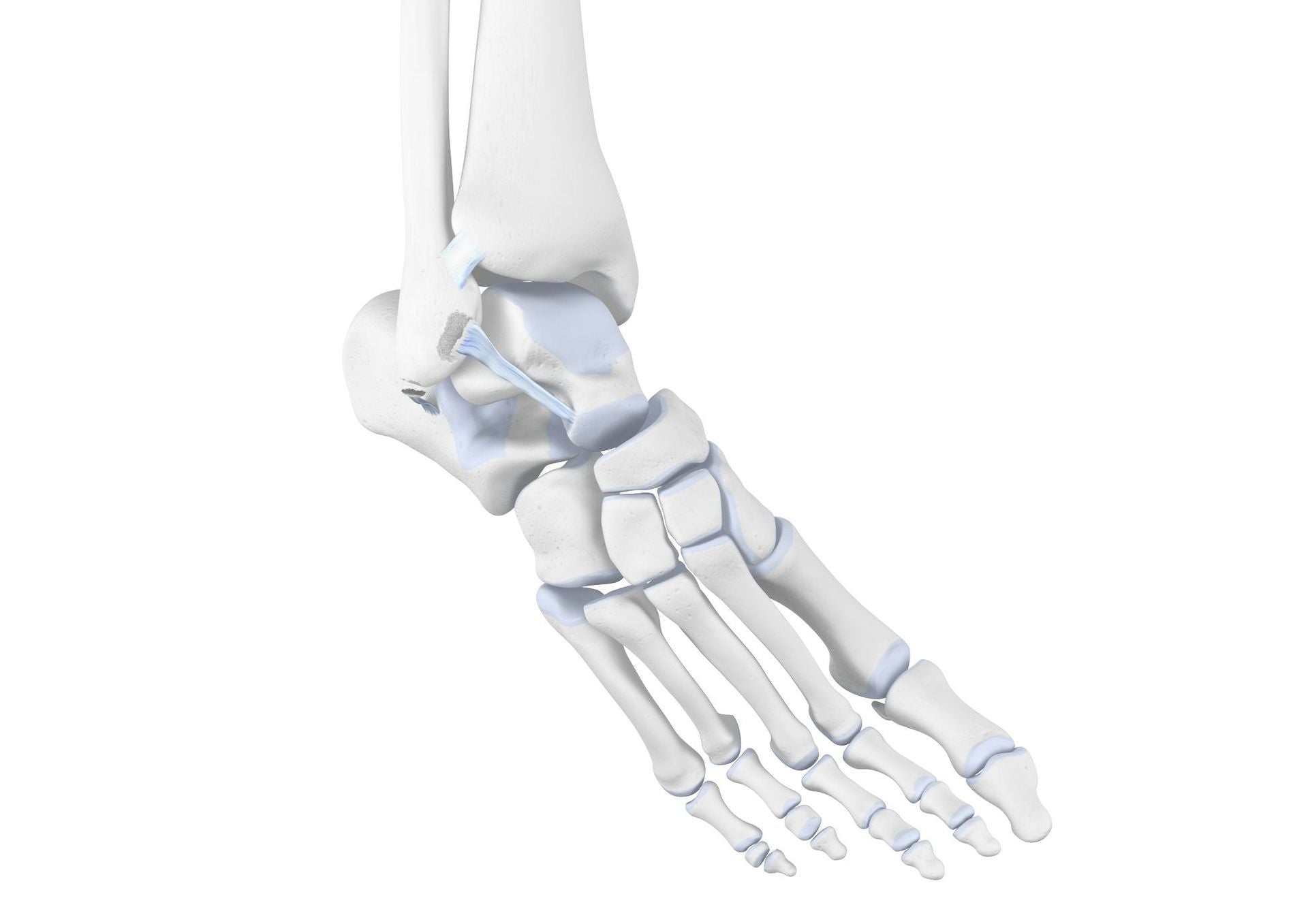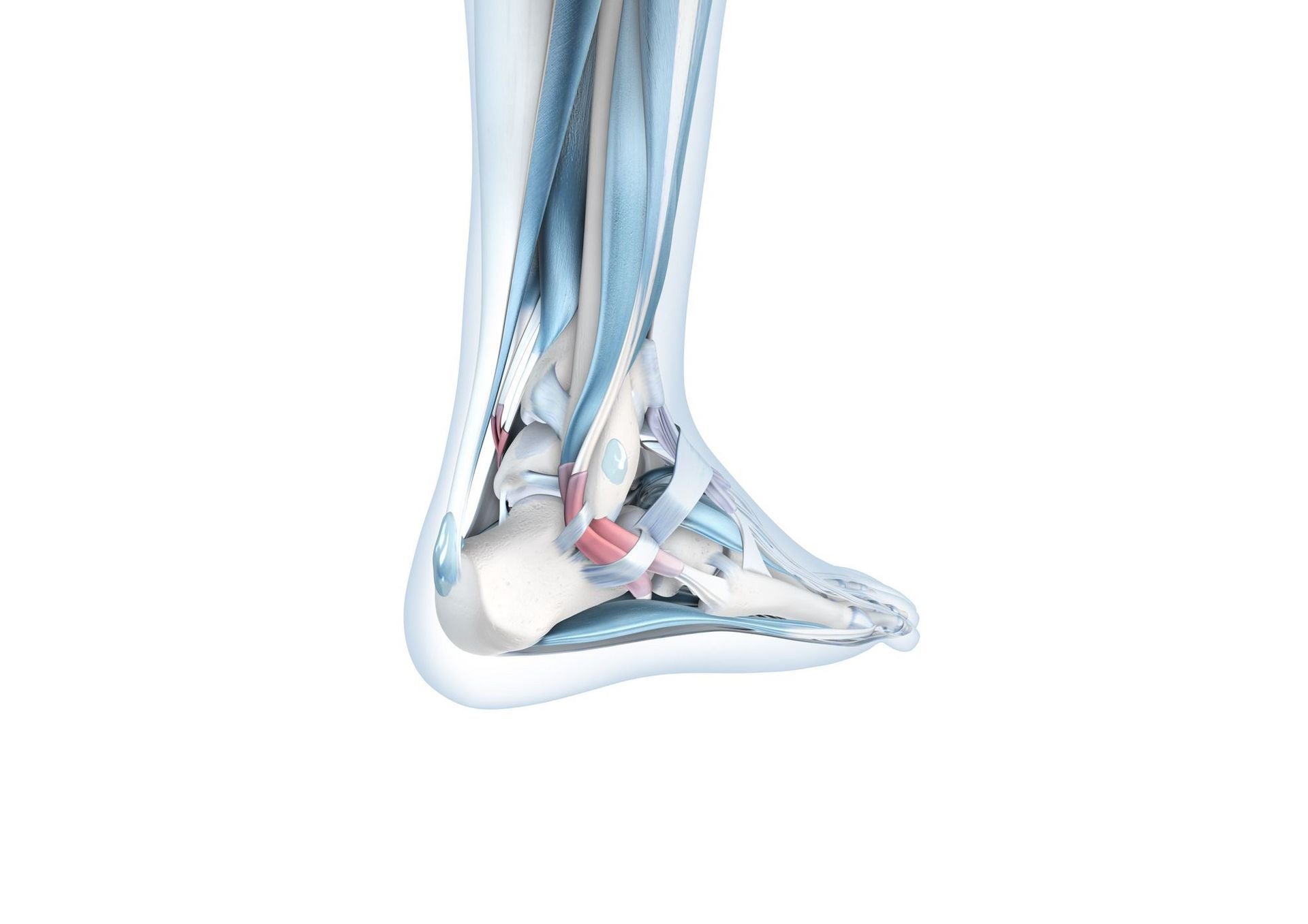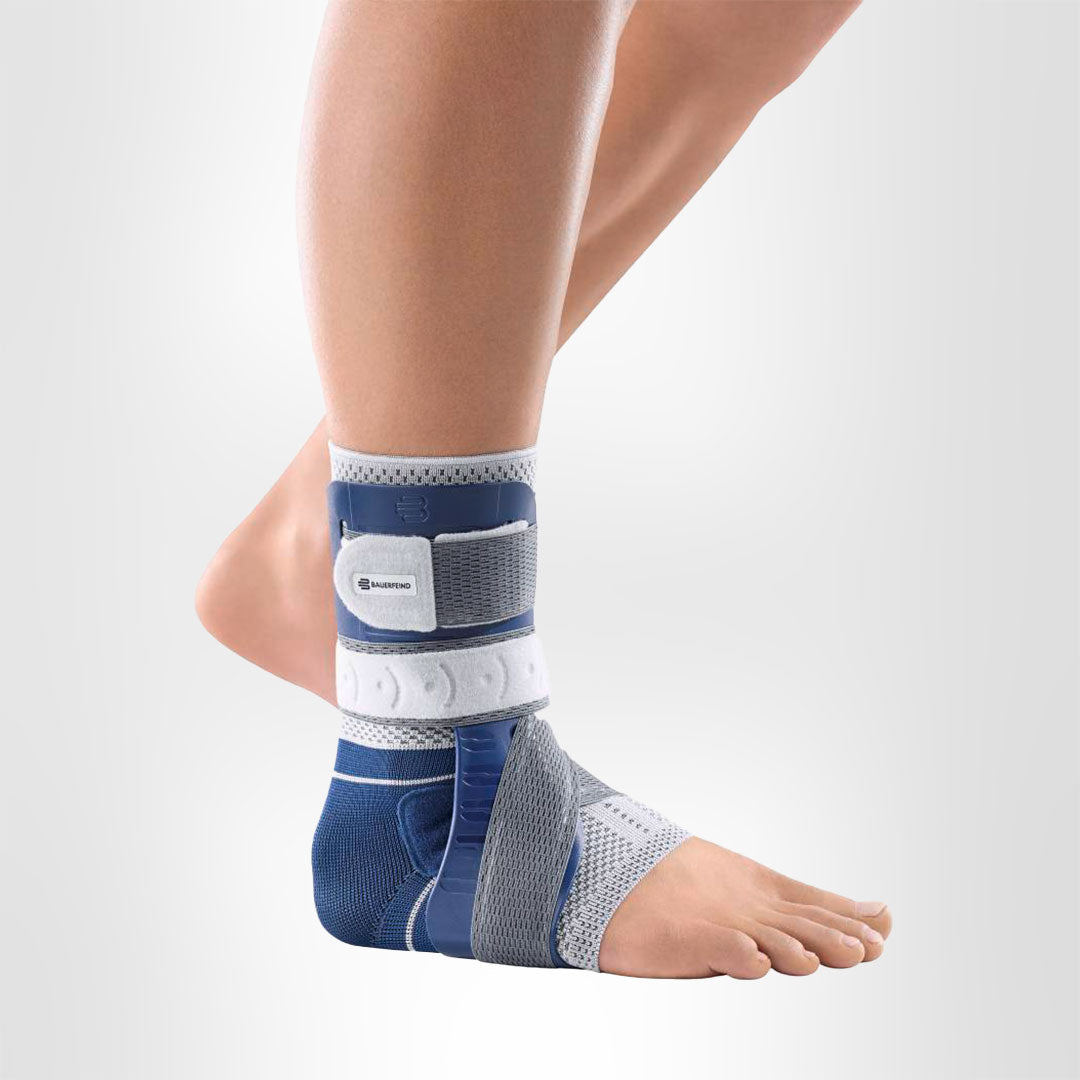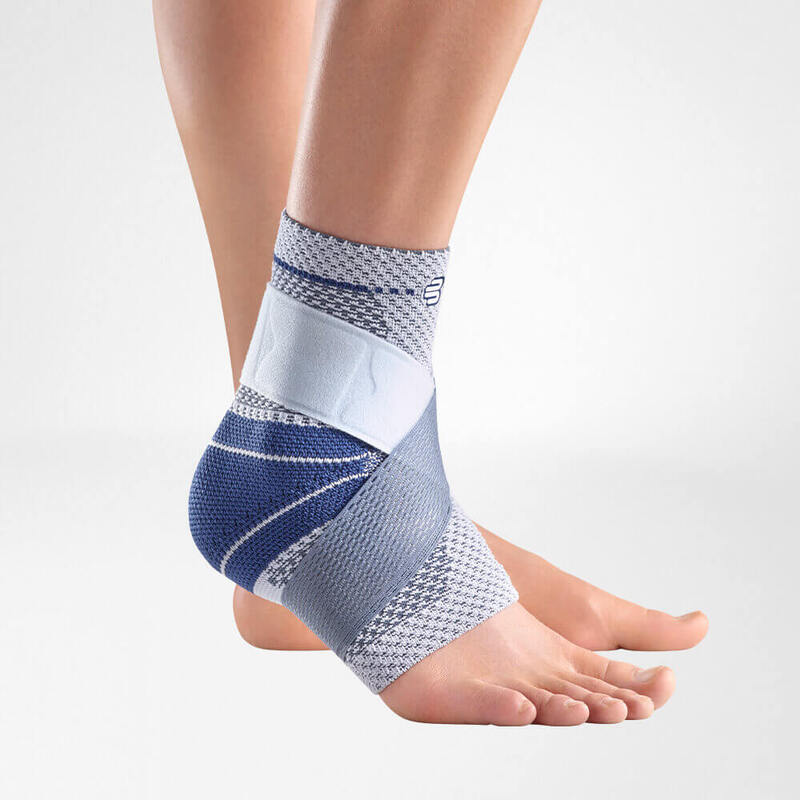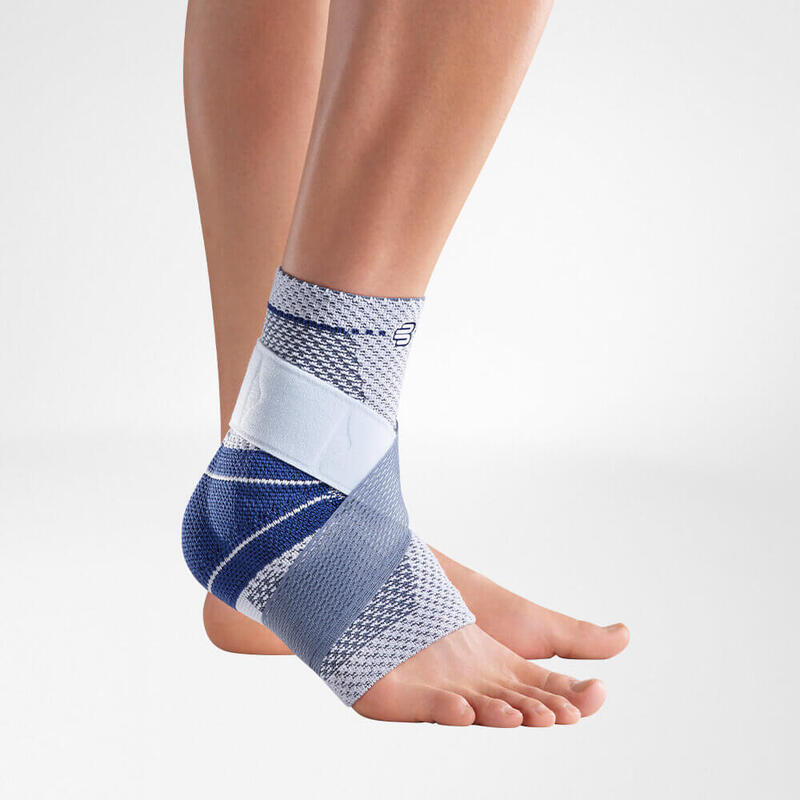Instability at the ankle
Ankles are a true marvel of nature. Not only do they carry the entire weight of our bodies, but they are also sophisticated to allow complex movements. Anatomically, the ankle can be split into two sections: the upper and lower ankle.
The upper ankle consists of the tibia and fibula tip joint, while the lower ankle consists primarily of the heel and navicular bones, which are situated near the talus.
The central ankle bone provides a strong base for both the upper and lower parts of the ankle. An extensive apparatus of ligaments and muscles holds the ankle joint together and provides tremendous stability.
Symptoms, Risks and Causes of Ankle Instability
Ankle injuries can arise from a wide variety of causes. Most people associate ankle injuries with sprains and ligament strains during sporting activities, twisting, or other unfortunate accidents. With sufficient rest, minor injuries can heal by themselves.
However, in cases of major damage to the ankle, like a fracture or ligament rupture, surgery and subsequent rehabilitation are crucial to facilitate the healing process. The upper ankle is especially prone to sprains, ligament strains and other types of injury.
Cases involving significant damage to the ligaments have an increased risk of re-injury. Some of the primary risk factors include:
Previous ankle injuries such as sprains or overstretching of the ligaments.
A misalignment of the ankle caused by an inward shift of the joint, also known as buckling.
Hyper elasticity, i.e. loose ligaments in the ankle that result in a lack of stability.
High-risk physical activities and sports that apply extreme stress on the ankle.
Chronic Ankle Instability
What Is Chronic Ankle Instability?
Repeated ankle injuries can lead to chronic ankle instability, which is characterised by recurring pain, a spongy running sensation, and an increased likelihood of recurrent sprains.
In contrast, functional instability presents with similar symptoms, however, there is no loss to the joint’s stability. A typical example would be a patient with arthritis in the ankle joint.
Causes of Chronic Ankle Instability
Chronic ankle instability is primarily caused by ligament damage. The ankle has three inner and three outer ligaments. Together, they form a complex delta-shaped structure inside the ankle and stabilise it.
Abnormal bending movements of the foot can result in overstretching of the ligaments, which is followed subsequently by chronic pain. Additional stress inflicted on the affected ankle may result in further damage to the joint.
Treatment of Chronic Ankle Instability
Alleviating pressure and stress from the injured foot is the best initial measure of recovery.
Reducing stress helps to relieve the joint and prevent further damage.
Applying an ice pack is highly recommended to stabilise the joint and reduce any swelling present.
Ample rest and immobilisation of the ankle can facilitate a swift recovery. However, a prompt visit to the doctor is strongly recommended in cases of severe injury, as there is an increased likelihood of over-stretching and micro-cracks in the ligaments after an injury.
For severe cases, treatment can be a long and slow process. An ankle brace can help to facilitate a smooth recovery as it provides crucial support and additional stability to the joint. Bauerfeind’s range of MalleoTrain ankle supports aim to stimulate the healing process by promoting blood circulation, reducing bruising and combating inflammation around the ankle joint.
Ankle Instability After Severe Ankle Trauma
Surgical intervention may be necessary in severe cases of injury, like a fracture or ligament tear. Depending on the severity, complete fixation could be unavoidable.
However, long fixation periods in a cast or moon boot can have an adverse effect on the ankle. Prolonged fixation ultimately results in instability of the ankle as muscles atrophy over time.
Thus, it is crucial to treat and rehabilitate the injured ankle to strengthen the joint and prevent further injury. With adequate rest and support, ligaments and muscles need several months to regain full mobility and stability.
During this time, an ankle brace can play a significant role in the recovery process, as it helps to stimulate blood circulation and reduce inflammation or swelling. Patients with functional ankle instability can also benefit from wearing an ankle brace, as it helps to alleviate pain and drastically improve mobility.
Medical Ankle Braces and Orthoses for Ankle Instability
MalleoLoc L3 Ankle Brace
Ankle braces are a valuable part of an effective patient care plan for chronic and functional ankle instability.
Bauerfeind's MalleoLoc L3 ankle support provides a high degree of lateral stabilisation to the ankle joint, without limiting normal walking movement. The anatomical shape of the thin plastic shell conforms to the outer side of the foot to prevent sprains and ligament tears. Featuring a compression garment, the MalleoLoc L3 ankle support also helps to reduce swelling by improving blood circulation around the ankle joint.
Bauerfeind’s MalleoTrain Plus ankle support provides targeted pressure and stability around the ankle joint. It features two gel massaging pads positioned on the inner and outer sides of the ankle, which help reduce soreness and provide pain relief.
Medical-grade compression is engineered into the knitted elastic fabric, helping to promote blood circulation around the ankle joint to facilitate the healing process. The MalleoTrain Plus' breathable and skin-friendly flat-knit material is comfortable to wear for long periods of time in shoes.


